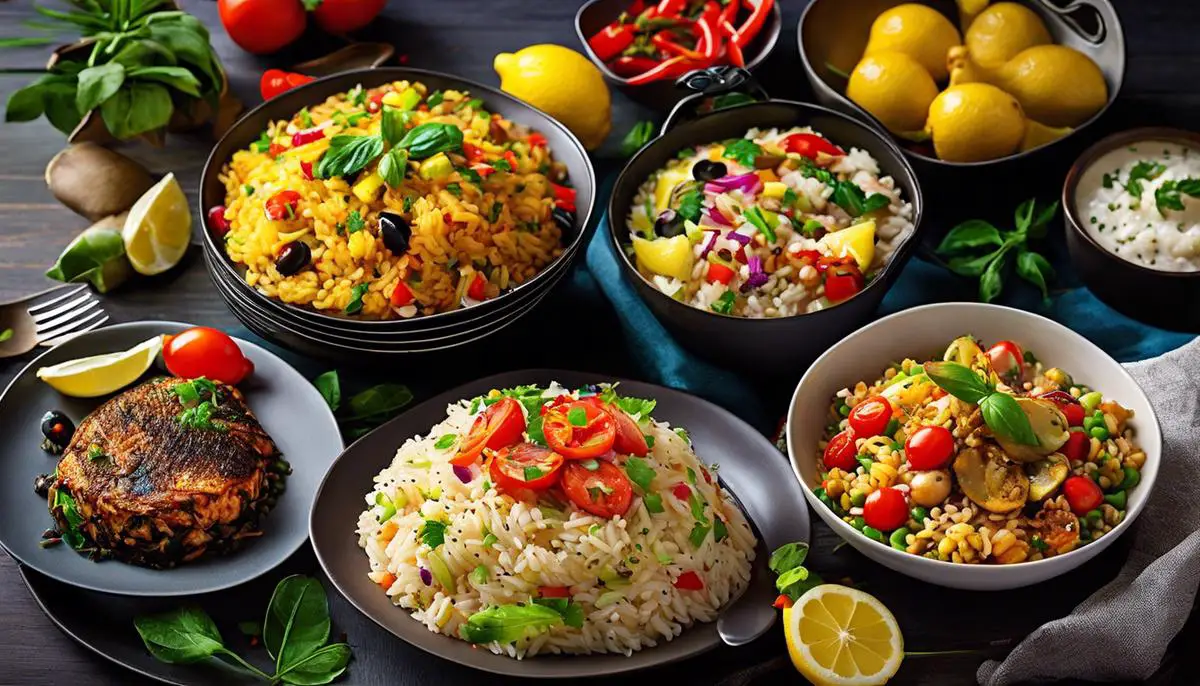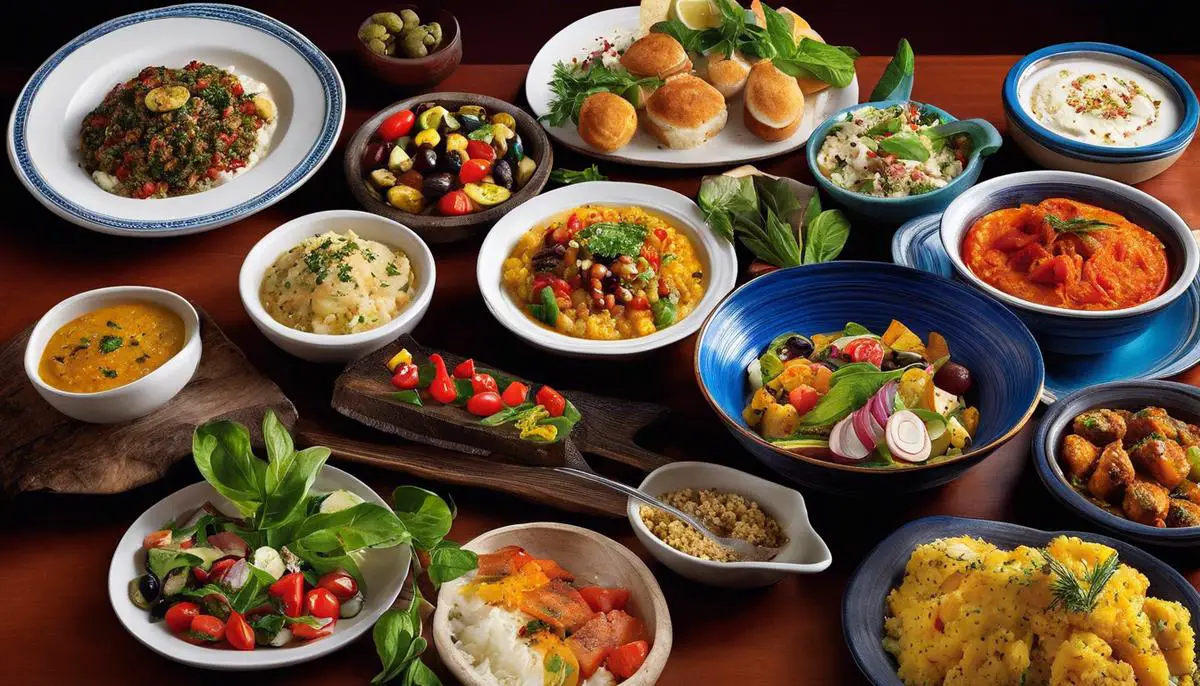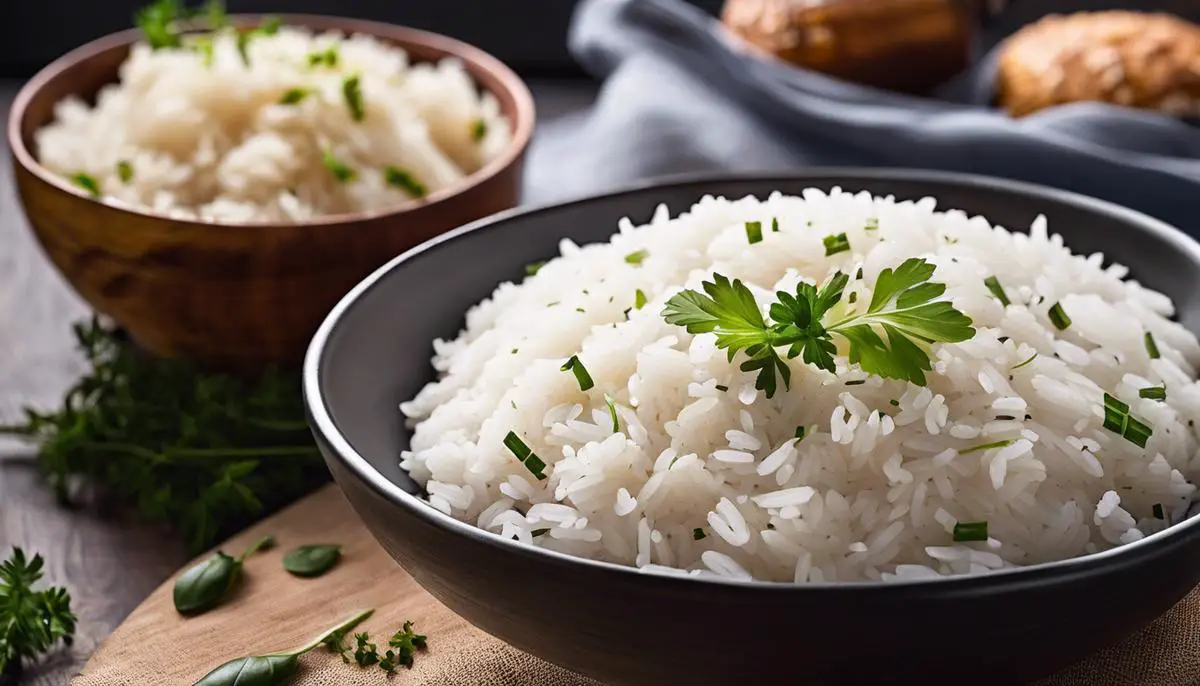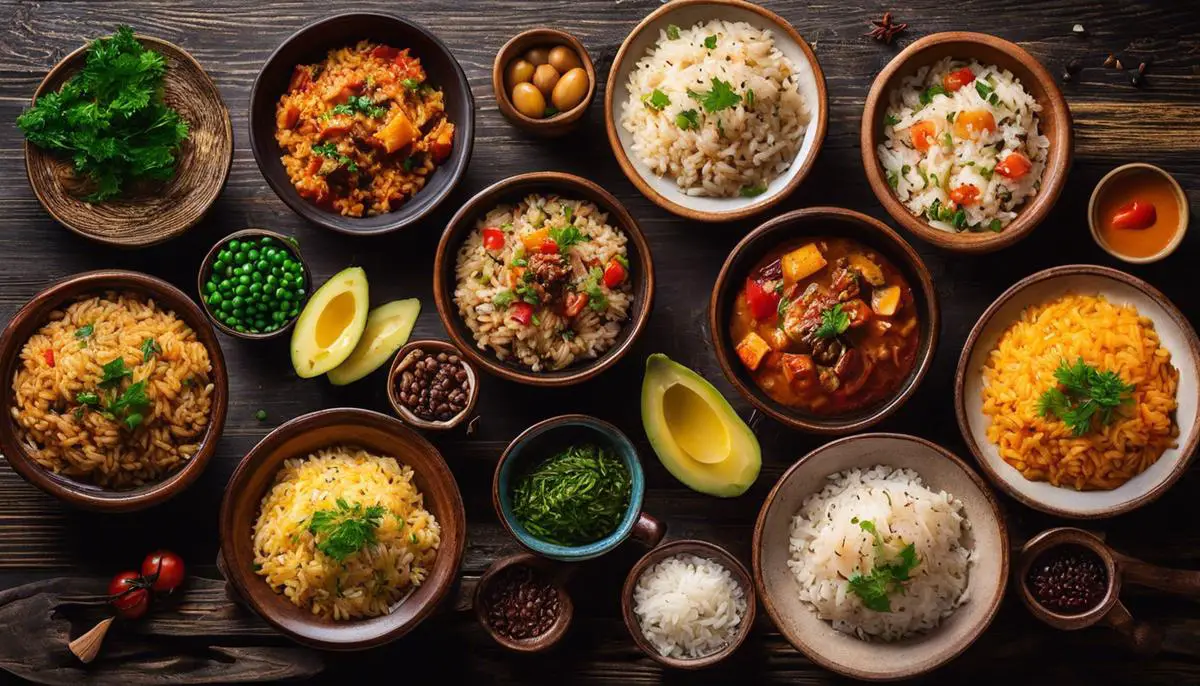
Welcome to a flavorful exploration of Mediterranean gastronomy, with a focus on its rice-based recipes. Mediterranean cuisine, revered for its health benefits, exotic flavors, and countless recipe variations, spans the culinary traditions of regions from Italy and Greece to the Middle East. Rice, a versatile and nutritious grain, plays a central role in many of these dishes, offering a staple foundation on which diverse ingredients and spices can reveal their tantalizing tastes. The mastery of rice preparation is an essential step in authenticating your Mediterranean culinary skills. From understanding the nuances of various rice types such as arborio, brown, and white, to perfecting the art of cooking rice to the ideal texture, this journey will guide you into the soulful depth of this cuisine.
Understanding Mediterranean Food
When it comes to worldwide cuisine, few can rival the delectable appeal of Mediterranean kitchen magic. Age-old recipes sending ripples of flavor across centuries, this insatiable melange of fresh, wholesome ingredients – fruits, vegetables, whole grains, legumes, nuts, seeds, olive oil, seafood, poultry, and minimal dairy products and red meat – doesn’t just charm taste buds. It regales the senses, feeding the body, mind, and soul. But what’s the culinary wand that weaves together this delightful potpourri of health and taste? What’s the key to Mediterranean flavors?
The answer lies in a triad of fundamental elements – liberal use of olive oil, an emphasis on fresh herbs and spices, and an inherent respect for the original taste of foods.
Olive oil reigns supreme in the Mediterranean pantry. The liquid gold of Mediterranean cuisine, olive oil is the predominant fat, drizzled generously over salads and incorporated copiously into many a succulent dish. Not only is it beneficial to heart health, but it also lends a unique richness that’s truly sensuous. Steeped in tradition and dabbed with sophistication, the golden elixir’s entire nuance swiftly elevates any dish to culinary artistry.
Herbs, spices, and seasonings are the second key that unlocks the treasure of Mediterranean taste. Basil, oregano, rosemary, and thyme mingle amicably with cumin, paprika, saffron, sumac, and za’atar to create vivid taste profiles that dance on the tongue. Garlic, onions, and citrus add a zesty punch, while flavors of olive, tomato, and feta cheese encapsulate the essence of the region’s cuisine. The symphony of these elements, when blended together, results in a flavorful maze that tantalizes palates but is never overwhelming.
Respect for ingredients is the third cornerstone of this cuisine. This is partly why Mediterranean dishes often verge on simplicity. They highlight the natural, unaltered tastes of fruits, vegetables, grains, and proteins, typically using only a handful of fresh ingredients in every plate. The pleasure is in tasting the food in its natural form, allowing each ingredient’s complexity to emerge. Every element is celebrated, every morsel glorified.
Mediterranean food is as much about the process as it is about the product. It champions the art of shared meals, encouraging long, lingering courses over hurried bites. It breathes into existence endless nights of laughter and discussion around a shared table, reinforcing the bonds of community and camaraderie. Ultimately, the true essence of it goes beyond the ingredients. It’s about an approach to eating – slowly, with enjoyment and in good company.
So, for those chasing the enchantment of Mediterranean flavors, understand that the cuisine isn’t a mere means to stave off hunger. It’s a lifestyle, a symphony of shared flavors and shared experiences. Ignite your love for this culture-enriched cuisine – embrace olive oil, experiment with herbs and spices, respect every ingredient, and relish the experience of sharing good food with good company. Because, when it comes to Mediterranean flavors, it isn’t just about what’s on the plate. It’s about the people around the table.

Mastering Rice Preparation
Mastering the Art of Perfect Rice for Mediterranean Cuisine
For the Mediterranean culinary enthusiast, crafting the perfect bowl of rice is akin to a painter mastering his brush strokes. If you have been longing to perfect your technique, this guide will walk you through everything you need to know.
In the wide world of Mediterranean gastronomy, rice serves as an unassuming platform, gracefully accepting and amplifying the array of flavors it’s paired with. Mediterranean meals not only spotlight bold herbs and robust olive oil, they also showcase the humble, yet central, culinary canvas of well-cooked rice.
To begin this delicious journey, first, let’s put the spotlight on the variety of rice used. A medium to long grain rice is particularly preferred in Mediterranean cuisine. This is mainly due to its minimal starch content which prevents clumping, giving us distinct grains that are a sheer joy to eat. Basmati, Jasmine, or even Arborio rice can serve as ideal choices.
In terms of preparing the rice, the initial rinsing step is quite crucial. Briefly rinse the rice under cold water to wash off the excess starch. This process aids in achieving that sought-after fluffiness that all rice-lovers adore.
The ratio of water to rice is also pivotal. A general rule of thumb is a 1:1 or a 1:1.5 rice to water ratio. It’s crucial to adjust this based on the specific type of rice being used, as some varieties might need slight tweaks to achieve the desired texture.
Cooking method is another determinant for your perfect bowl of rice. The traditional pot method does a spot-on job. To do this, let the rice and water reach a boiling point, then reduce to a simmer, cover the pot and cook until all the water is absorbed.
If you want to elevate your rice game, consider sautéing your grains in a bit of olive oil before adding the water. This method not only enriches the flavor but also aids in reducing stickiness of the grains.
Remember, when checking if your rice is done, take a taste! The grains should be tender, but not mushy, retaining a bit of a bite. Once your rice has cooked, it’s essential to give it a bit of rest under the closed lid for about 5-10 minutes. This allows the remaining steam to help fluff up the rice perfectly.
Consider adding in a splash of lemon juice or a sprinkle of herbs to imbue your rice with that authentic Mediterranean touch. Za’atar, oregano, or even a pinch of saffron can work wonders in transforming rice into a flavorful accompaniment to your Mediterranean feast.
Remember, the journey to the perfect bowl of rice is unique to each culinary artisan. Treat this guide as a stepping stone, to begin with, but feel free to make variations that work best for your palate. Gastronomy, after all, is an art and every artisan is entitled to their creative expression. It’s time to don that apron, arm yourself with this guide, and embark on your quest to perfect that key component of Mediterranean cuisine: the humbling, unifying, and delightful bowl of rice.

Creating Mediterranean Rice Recipes
Now that we’ve taken a deep dive into the realm of Mediterranean cuisine, from its lifestyle elements to the core components and techniques, let’s roll up our sleeves and explore some delightful Mediterranean rice recipes. Celebrated for versatility and ability to absorb the symphony of flavors – rice play a crucial role in this sun-kissed cuisine.
A Mediterranean dish that tops the chart in rice recipes is certainly the Spanish Paella. Awash with vibrant flavors, this one-meal-dish brims with an array of ingredients like saffron-infused rice, assorted seafood, chorizo, and vegetables. Each spoonful is a burst of delectable tastes, radiantly echoing the culture it sprouts from. Remember, the variety of rice used is essential here. Opt for Spanish Bomba rice or at least short-grain rice to get the lavish and creamy texture of a proper paella.
Then there’s the Greek classic Spanakorizo, a green-hued, silky concoction of spinach and rice. The recipe dances between simplicity and depth of flavor. The short grain rice perks up with flavors of freshly sautéed garlic, onion, and loads of spinach. A finishing touch of lemon zest and crumbles of feta provide a flavor contrast that’s going to make your taste buds sing Greek symphonies!
Italy pitches in with their signature Risotto. Notoriously known for the careful stirring it demands, risotto delivers a creamy and luxurious texture unmatched by any other rice dish. Arborio rice, the star of this dish, draws in the savors of sauteed onions, ladles of broth, Parmesan cheese, and in true Mediterranean fashion, some dry white wine. It comes with an open invitation for variation, allowing you to toss in mushrooms, seafood, or any other ingredient of your choice.
Don’t forget the Turkish Pilaf – a simple yet profound side dish commonly seen across Mediterranean tables. Fluffed rice sautéed to golden brown in butter, slow-cooked with fragrant spices, and often garnished with nuts and dried fruits – a manifestation of true Turkish hospitality on a plate.
Another entrée, Lebanese Mujadara, is a humble, earthy comfort dish of lentils and rice, topped with caramelized onions. This hearty dish is a proof that the simplest ingredients can conspire to create show-stopping meals.
While these recipes and dishes paint a beautiful Mediterranean canvas with rice, the palette is open for exploration and improvisation. Remember, cooking is an art, and you’re the artist. Whether it’s squeezing a zest of lemon on your risotto or scattering fresh herbs atop your paella, don’t hesitate to embark on flavor adventures. Look beyond the recipe. Seek familiarity with the ingredients, the perfumes they bring, and the soulful notes they play on the palate. Most importantly, savor each stir, each simmer and shared meal because that’s what Mediterranean cooking truly embodies – the joy of curating, consuming, and communing over food. Bon appétit!

As we uncover the secret to Mediterranean rice recipes and navigate through the intertwining paths of this rich cuisine, you will find that cooking is more than just combining ingredients. Each handful of grains, zest of lemon, or pinch of spice reveals a story, a tradition passed down generations, a shared memory. Simple recipes like the zesty and vibrant Greek lemon rice, creamy depth of Italian risotto, will lead you to the grandeur of the complex and chromatic Spanish paella. It’s a delightful dance of flavors, a celebration of culture and tradition, cooking and sharing, creating bonds over meals seasoned with love. This guide will lead you beyond cooking to a sensory, cultural, and sentimental learning experience, opening doors to a world where food is the language of love and unity.


